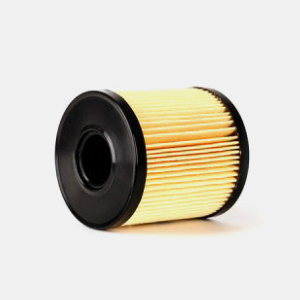-
 Afrikaans
Afrikaans -
 Albanian
Albanian -
 Amharic
Amharic -
 Arabic
Arabic -
 Armenian
Armenian -
 Azerbaijani
Azerbaijani -
 Basque
Basque -
 Belarusian
Belarusian -
 Bengali
Bengali -
 Bosnian
Bosnian -
 Bulgarian
Bulgarian -
 Catalan
Catalan -
 Cebuano
Cebuano -
 China
China -
 Corsican
Corsican -
 Croatian
Croatian -
 Czech
Czech -
 Danish
Danish -
 Dutch
Dutch -
 English
English -
 Esperanto
Esperanto -
 Estonian
Estonian -
 Finnish
Finnish -
 French
French -
 Frisian
Frisian -
 Galician
Galician -
 Georgian
Georgian -
 German
German -
 Greek
Greek -
 Gujarati
Gujarati -
 Haitian Creole
Haitian Creole -
 hausa
hausa -
 hawaiian
hawaiian -
 Hebrew
Hebrew -
 Hindi
Hindi -
 Miao
Miao -
 Hungarian
Hungarian -
 Icelandic
Icelandic -
 igbo
igbo -
 Indonesian
Indonesian -
 irish
irish -
 Italian
Italian -
 Japanese
Japanese -
 Javanese
Javanese -
 Kannada
Kannada -
 kazakh
kazakh -
 Khmer
Khmer -
 Rwandese
Rwandese -
 Korean
Korean -
 Kurdish
Kurdish -
 Kyrgyz
Kyrgyz -
 Lao
Lao -
 Latin
Latin -
 Latvian
Latvian -
 Lithuanian
Lithuanian -
 Luxembourgish
Luxembourgish -
 Macedonian
Macedonian -
 Malgashi
Malgashi -
 Malay
Malay -
 Malayalam
Malayalam -
 Maltese
Maltese -
 Maori
Maori -
 Marathi
Marathi -
 Mongolian
Mongolian -
 Myanmar
Myanmar -
 Nepali
Nepali -
 Norwegian
Norwegian -
 Norwegian
Norwegian -
 Occitan
Occitan -
 Pashto
Pashto -
 Persian
Persian -
 Polish
Polish -
 Portuguese
Portuguese -
 Punjabi
Punjabi -
 Romanian
Romanian -
 Russian
Russian -
 Samoan
Samoan -
 Scottish Gaelic
Scottish Gaelic -
 Serbian
Serbian -
 Sesotho
Sesotho -
 Shona
Shona -
 Sindhi
Sindhi -
 Sinhala
Sinhala -
 Slovak
Slovak -
 Slovenian
Slovenian -
 Somali
Somali -
 Spanish
Spanish -
 Sundanese
Sundanese -
 Swahili
Swahili -
 Swedish
Swedish -
 Tagalog
Tagalog -
 Tajik
Tajik -
 Tamil
Tamil -
 Tatar
Tatar -
 Telugu
Telugu -
 Thai
Thai -
 Turkish
Turkish -
 Turkmen
Turkmen -
 Ukrainian
Ukrainian -
 Urdu
Urdu -
 Uighur
Uighur -
 Uzbek
Uzbek -
 Vietnamese
Vietnamese -
 Welsh
Welsh -
 Bantu
Bantu -
 Yiddish
Yiddish -
 Yoruba
Yoruba -
 Zulu
Zulu
Effective Strategies for Using Hail Netting to Protect Your Garden Plants and Crops
Hail Netting for Gardens Protecting Your Plants from Nature's Fury
Hailstorms can wreak havoc on gardens, turning flourishing vegetation into a patchwork of wilted leaves and broken stems in a matter of minutes. For gardeners, protecting their hard work from unpredictable weather is paramount. One effective solution that has gained popularity among gardening enthusiasts is hail netting. This article delves into the benefits of hail netting and offers guidance on how to incorporate it into your gardening practices.
What is Hail Netting?
Hail netting is a protective barrier made from lightweight, durable materials designed to shield plants from hailstones and other harsh weather conditions. Typically constructed from woven polyethylene or similar materials, hail netting exhibits various mesh sizes suitable for different types of plants and environments. The netting is often opaque, providing some shade, or translucent, allowing sunlight to filter through while keeping hail at bay.
Benefits of Hail Netting
1. Protection Against Hail Damage The primary purpose of hail netting is to prevent damage from hailstones. Regular exposure to hail can lead to significant losses in crops, including reduced yield and quality. The netting absorbs the impact of hail, effectively scattering the force and protecting sensitive plants and fruits underneath.
2. Versatile Application Hail netting is versatile and can be used in various settings—from small home gardens to large commercial farming operations. It can be draped over individual plants or stretched across entire rows, making it easy to adapt to different garden layouts.
3. Promotes Airflow Unlike solid materials that can trap heat and moisture, hail netting promotes adequate airflow around plants. This natural ventilation reduces the risk of overheating and fungal diseases, fostering a healthier growing environment.
4. UV Protection Many hail netting products are treated to provide ultraviolet (UV) protection, shielding plants from excessive sun exposure that can cause sunburn on leaves and fruits. This is particularly beneficial during hot summer months, where prolonged sun exposure can be detrimental.
hail netting for gardens

5. Cost-Effective Solution Compared to building extensive structures or greenhouses, hail netting offers a cost-effective solution for protecting plants. The initial investment is relatively low, and the material is reusable, making it a sustainable choice for long-term gardening.
How to Use Hail Netting
Implementing hail netting in your garden requires careful planning and execution
. Here are some practical steps to get started1. Assessment Evaluate the types of plants you have and their susceptibility to hail damage. Tender young plants and fruit-bearing crops are often the most vulnerable.
2. Select the Right Type of Netting Choose a netting with appropriate mesh size based on your garden's needs. For smaller plants, finer mesh may be ideal, while larger crops may benefit from coarser netting.
3. Installation Install the netting firmly above the plants. You can use stakes, ropes, or existing garden structures to support the netting. Ensure the netting is taut enough to prevent sagging, which could lead to damage during severe storms.
4. Maintenance Regularly inspect the netting for any signs of wear or damage. Clean the netting to prevent buildup of debris that can hinder airflow and light penetration.
Conclusion
Hail netting represents an effective and economical solution for safeguarding gardens against the unpredictable wrath of nature. By understanding the advantages of hail netting and implementing it correctly, gardeners can ensure their plants thrive, even in the face of severe weather conditions. Investing in this protective measure not only preserves the beauty of gardens but also secures the fruits of labor for seasons to come.
-
Why Nylon Mesh Netting is Revolutionizing Industrial and Commercial ApplicationsNewsJun.13,2025
-
Reinventing Reliability with Construction Wire MeshNewsJun.13,2025
-
Protect Your Crops with High-Performance Agricultural Netting SolutionsNewsJun.13,2025
-
Premium Breeding Net Solutions for Modern AquariumsNewsJun.13,2025
-
Precision Filtration Solutions for Industrial and Commercial NeedsNewsJun.13,2025
-
Advanced Industrial Mesh Solutions for Every ApplicationNewsJun.13,2025











